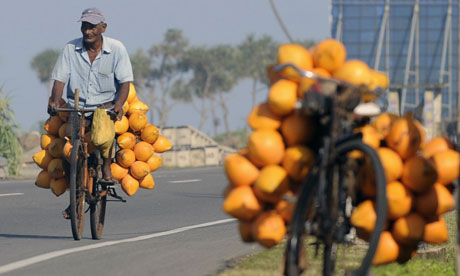Shehan Karunatilaka on a capital that straddles the beautiful and the banal.
If a visitor is planning a trip to Sri Lanka, I usually advise that they skip Colombo. Not being harsh, but on the island’s buffet table of scenic delights, the city is very much a side dish.
On first glimpse, it’s just another Asian metropolis, trying to peddle that East-meets-West thing. Not as berserk as Mumbai, not as sober as Singapore. Most travelers will drive straight through, en route to the beaches down south, the hilltops out east, or the fallen kingdoms up north.
If you’re in Sri Lanka to upload pics, there may be some boxes for you to tick. The sun setting over the kites on Galle Face Green. The city ablaze with light and color during Vesak. Elephants by Beira Lake in full-moon fancy dress.
But cities aren’t just for tourists. Dismount from your air-conditioned car into the heat and the dust, and you’ll find that there’s plenty below the surface if you’re only willing to scratch.
The Greeks, Romans, and Persians used Colombo’s harbor as a trading port. The Portuguese built their fort here and commanded the coast. The Dutch seized the city in the bloody siege of 1656, before ceding it to the British a century and a half later. Every colonizer left his paw prints. You see it in the clock towers, the schools, and the grand hotels. In the railway line that snakes between Galle Road and the coast and in the cricket games that fill every street. Colombo’s the only city in the world with four test-match venues, a place where the game is practiced as a religion and celebrated as a carnival. Cricket binds this city, as it does a nation not short of divisions.
Foreign empires have colonized Colombo, from the Greeks and Persians onward. Now, the city is seeking to reinvent itself, Alfredo Caliz / Panos
Colombo houses many worlds. From the malls of Bambalapitiya to the palaces of Cinnamon Gardens; from the dives of Slave Island to the balconies of Havelock Town. Pathways decorated with lush trees and colorful kovils run by rickety billboards and smelly canals. Roads crowded with buses, trishaws, and trucks make way for motorcades of Pajeros and Lamborghinis. Gaudy casinos rub shoulders with churches.
It’s a city that doesn’t know where it’s going but is determined to get there. Today Colombo seeks to reinvent itself. Where once there were checkpoints, high structures are rising. Walls will be knocked down, highways extended, and slums replaced with greenery. While the sun shines without pause and the monsoon comes and goes as it pleases, everyone pretends to forget about the slaughters of the past. The burnings of 1983, the explosions of ’87, the abductions of ’89. The electoral bloodbaths, the prolonged power failures, and the parade of assassinations that punctuated the 1990s.
Today, we prefer to remember the victories. The cups won, the guns silenced, the bigotry overcome. We ignore the ghosts of the unresolved, the unconsoled, and the unforgiven that haunt our present. We try to celebrate our many communities and remind ourselves that we have no more excuses. No more war to hold us back, no more scapegoats to blame.
Because the city no longer belongs to the rulers who deface it, the thugs who defile it, or the bureaucrats who slow it down. It belongs to street vendors who serve up glorious kottu. To the trishaws adorned with misspelled slogans. To the bloggers who share secrets and the lovers who hide under umbrellas. It belongs to the girls with their straightened hair, the workers crammed into wobbly buses, and the strays that prowl its streets. To those who appear in Colombo’s gossip mags and those who pretend not to read them.
Colombo is both big city and small town. And, like the nation it belongs to, it is on the cusp of something. Something that could be wonderful or malign. It is poised on a precipice, about to plummet or to soar.
For those who live here, who’ve seen it morph from city by the sea to garrison town to this shiny emblem of our unseen future, Colombo offers its own buffet table of delights. It may not be a city that you instantly fall in love with, but it is one that you grow to adore.
.jpg)
